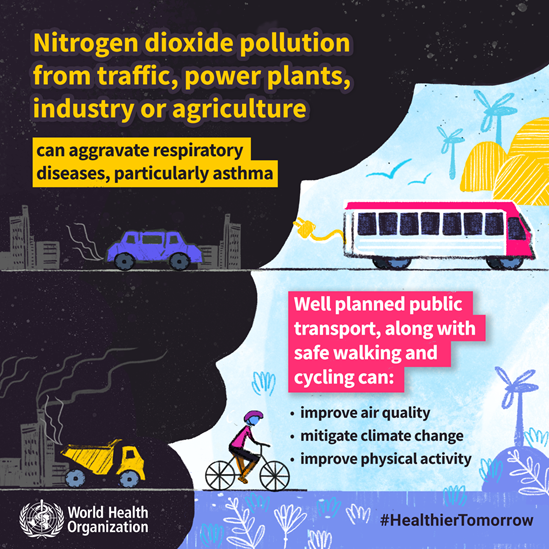
Detector for Air Quality
Air quality database: Update 2022
This database was release in April 2022 (5th edition) and the years of measurement range mostly from 2010 to 2019.
The WHO air quality database compiles data on ground measurements of annual mean concentrations of nitrogen dioxide (NO2), particulate matter of a diameter equal or smaller than 10 μm (PM10) or equal or smaller than 2.5 μm (PM2.5) which aim at representing an average for the city or town as a whole, rather than for individual stations. Both groups of pollutants originate mainly from human activities related to fossil fuel combustion.
The 2022 update (Fifth Version) database was released in April 2022 and hosts data on air quality for over 600 human settlements in more than 100 countries.
The data compiled in this database is used as input to derive the Sustainable Development Goal Indicator 11.6.2, Air quality in cities, for which WHO is custodial agency.
Data sources
The primary sources of data were official reports of countries sent to WHO upon request, official national and subnational reports and national and subnational websites that contain measurements of PM10 or PM2.5 and ground measurements compiled in the framework of the Global Burden of Disease project. For NO2, ground measurements compiled for research by Larkin et al. in 2017 were obtained. Measurements reported by the following regional networks were also used: Clean Air for Asia, the Air quality e-reporting database of the European Environment Agency for Europe and the AirNow Programme from the United States embassies and consulates. If such official data were not available, values from UN Agencies, Development agencies and peer-reviewed journals were used.
Report - WHO Air Quality Database (Update 2022)
Excel Version - WHO Air Quality Database (Update 2022)
Ambient Air Quality Database Application
The WHO global ambient air quality database is continuously being updated. If you are an official air quality data provider at either the country or city level, please use this template to submit the data to WHO.
PM10, PM2.5, NO2 Annual Means & Data Accessibility

Related indicator
Related factsheet
Related tools
Related teams
Related health topic
Additional Resources




